Recent Articles
Popular Makes
Body Types
2019 Porsche Cayenne Road Test and Review
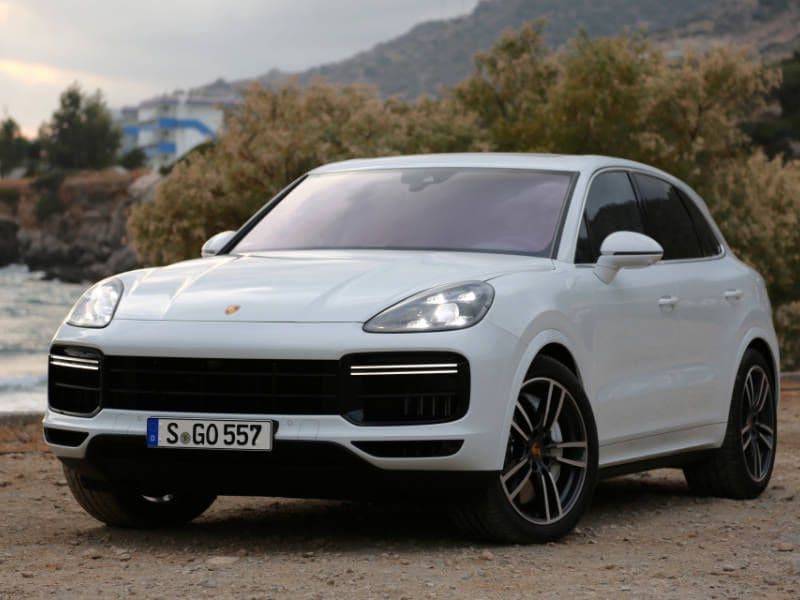
2019 Porsche Cayenne front three quarters close up ・ Photo by Miles Branman
Porsche has a privileged position in the performance luxury market. Often, consumers align the German automaker with exotic manufacturers like Ferrari, Lamborghini, Aston Martin and McLaren, yet none of these brands even approach Porsche's sales volume. Porsche ships more cars to customers in the U.S. alone than all of these competitors combined — globally. Somehow, Porsche has maintained an exclusive appearance while producing hundreds of thousands of vehicles per year.
A number of factors contribute to the company’s success, but none greater than the Cayenne. Introduced in 2002, the Cayenne was ahead of the performance SUV curve and has only grown more popular over the years. Now entering its third generation for the 2019 model year, Porsche’s mid-size SUV attempts to push further ahead of a highly competitive segment with updated styling, features and performance hardware. Autobytel became acquainted with the new Cayenne, Cayenne S and Cayenne Turbo on the narrow, perfectly paved roads of Crete, Greece. Here’s what we learned.
What’s New For 2019
The redesigned Cayenne's familiar size and shape hide monumental changes. Based on Volkswagen Group’s MLB platform (shared with the Audi Q7 and Bentley Bentayga), the 2019 Cayenne is longer and wider than the second generation. Each of the SUV’s body panels has been re-sculpted to match the latest Porsche design language, but the cab-rearward silhouette remains. Inside, the Cayenne has been thoroughly modernized with large, vivid displays and cutting-edge connectivity features.
Three forced-induction powertrains will be available initially — each accompanied by an all-wheel drive system and ZF automatic transmission. Turbo models introduce an adjustable rear spoiler to improve aerodynamic efficiency and downforce. The new Cayenne also debuts Porsche’s Tungsten-coated brakes, promising less brake dust, improved performance and a 30 percent longer lifespan.
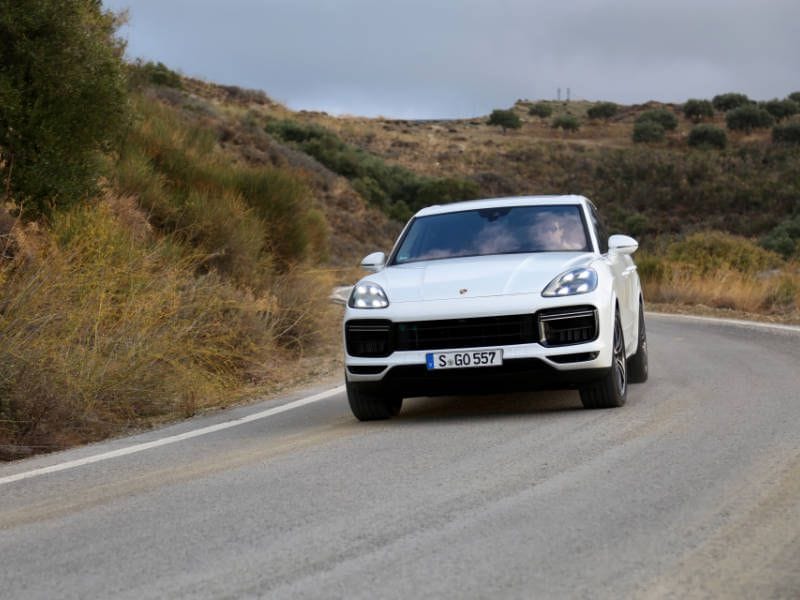
Photo by Miles Branman
Exterior Styling
It takes a keen eye to pick out the 2019 Cayenne’s design updates. 3.0 inches of additional length and 1.7 inches of extra width give the Cayenne a more elegant look, while a lower hood design and sharper light signatures enhance its sporting proportions. The front fascia now incorporates grille slats across the car’s width, LED headlights are standard on all models, and a continuous LED taillight is baked into the trunk design. Base models ride on 19-inch wheels, S editions upgrade to 20-inch styles and Turbo variants rock 21-inchers. As a visual package, the updated Cayenne is sleeker, hugs its wheels tighter and appears more upscale than before. While Porsche's smaller Macan has an edgier aesthetic, the carmaker restrains the Cayenne’s look to benefit interior volume and maintain broad appeal. For maximum impact, we recommend a Carrera White Metallic paint job and a set of RS Spyder Design wheels.
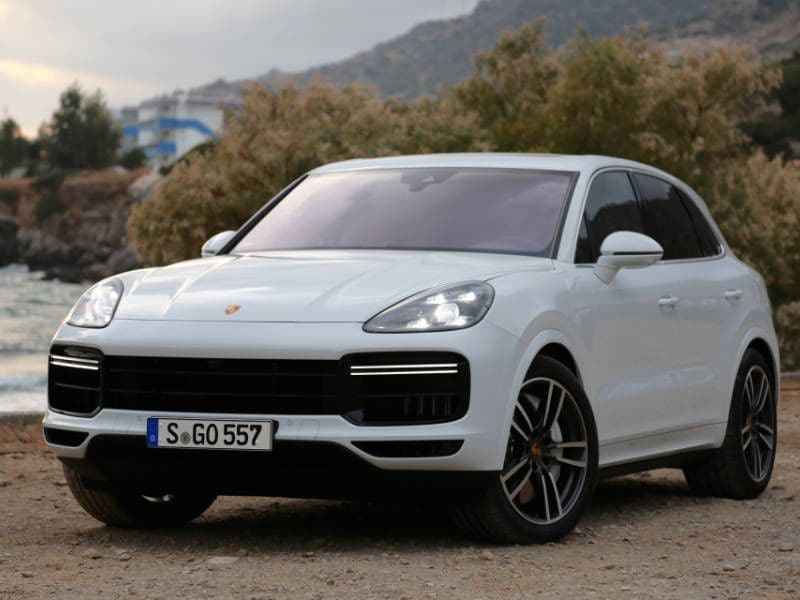
Photo by Miles Branman
Interior Comfort
In contrast with the Cayenne’s subtle exterior tweaks, Porsche makes sweeping changes to the SUV’s cabin to enhance comfort and usability. Like the updated Panamera sedan, the third-generation Cayenne trades a button-heavy dashboard and center stack for a minimalist layout and touch controls. Reducing clutter creates the sense of interior volume — complemented by a massive panoramic sunroof and excellent 360-degree visibility. Passenger space remains the same (suitably ample) and cargo capacity increases from 24 to 27 cubic feet behind the rear seat. Interior fit and finish is of the highest caliber with a mix of brushed metals, gloss black panels (or wood grain, if preferred), soft leather and delicate accents. Both the standard and sport seats are plush, supportive, multi-way adjustable, and available with heating and ventilation.
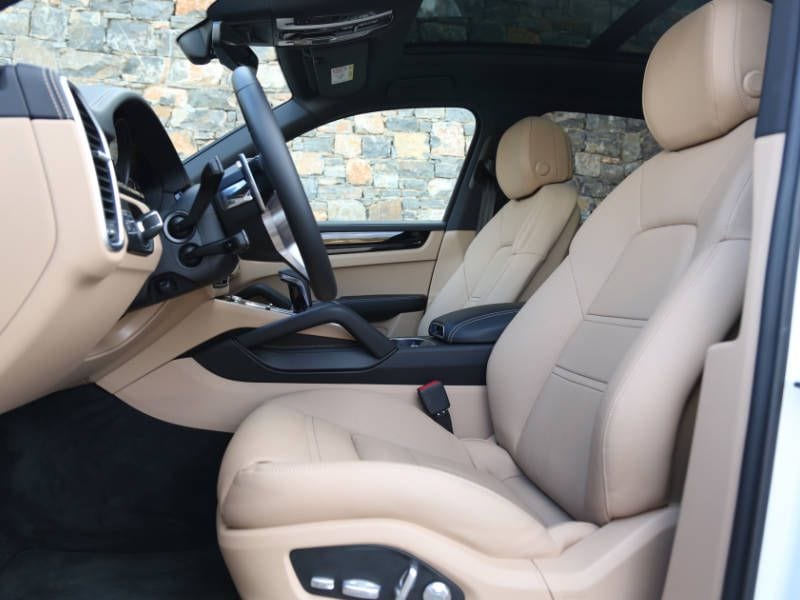
Photo by Miles Branman
Powertrain and Fuel Economy
Across the board, the new Cayenne grows more powerful and efficient thanks to a new range of powertrains. Base models utilize a single-turbo 3.0-liter V6 with 340 horsepower and 332 lb-ft of torque, hustling the 4,500-lb SUV to 60 mph in 5.9 seconds. S variants upgrade to a twin-turbocharged V6 good for 440 hp and 405 lb-ft of torque, cutting the sprint to 60 mph by a full second. Topping the Cayenne range is the Turbo with its 4.0-liter twin-turbo V8's 550 hp and 567 lb-ft of torque. Though the new Turbo makes 20 fewer horses than the outgoing Turbo S, it rockets to 60 mph in an improved 3.7 seconds (when equipped with the Performance Start feature). Each model is equipped with a ZF eight-speed automatic transmission that functions like a six-speed with two overdrive gears for greater efficiency. Despite the large delta in output and performance, the Cayenne model range shares similar combined fuel economy ratings of 22 mpg for the Turbo, 21 mpg for the S and 20 mpg for the Base.
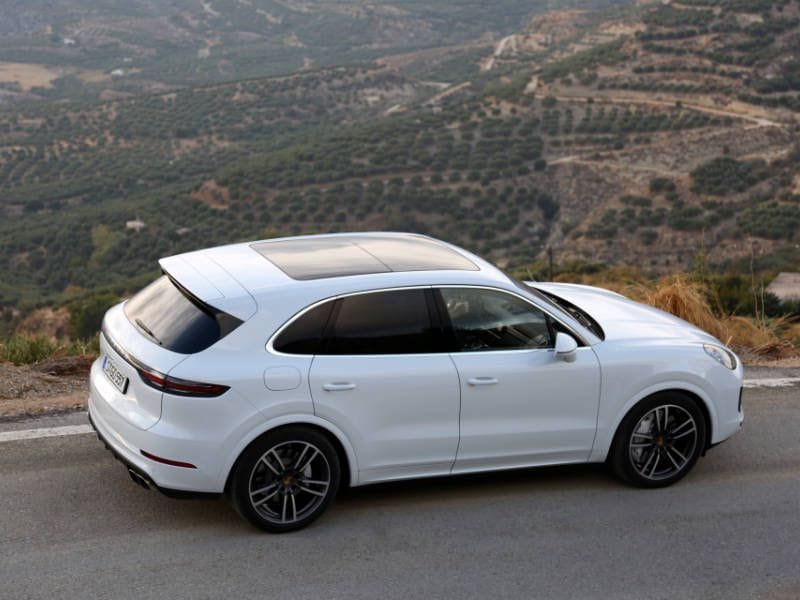
Photo by Miles Branman
Driving Dynamics
While various SUVs utilize powerful engines and grippy tires to go fast in a straight line, the 2019 Porsche Cayenne stands apart with handling precision. Every new Cayenne is equipped with Porsche’s active all-wheel drive system and electronic dynamic chassis control, which combine to mitigate body roll and intelligently apply power for optimal grip. For improved ride quality and damping response, Porsche offers an active suspension management and adaptive air suspension system. Rounding out the performance options list is rear-axle steering — up to 3 degrees of steering angle in the same direction or opposite direction of the front wheels — and torque vectoring. On the road, these systems can transform the Cayenne from luxury cruiser to corner carver in an instant. Off pavement, the adaptive air suspension raises the Cayenne’s ride height and absorbs punishment to maintain passenger comfort. Nothing defines a driver’s car more so than its steering. Communication among the tires, chassis and operator is critical to driving enjoyment and confidence. Porsche absolutely nails steering weight, responsiveness and sensitivity in all its vehicles — the Cayenne being no exception. From the driver’s seat, the ride height may say SUV, but the fun and feedback are far more akin to a sports car.
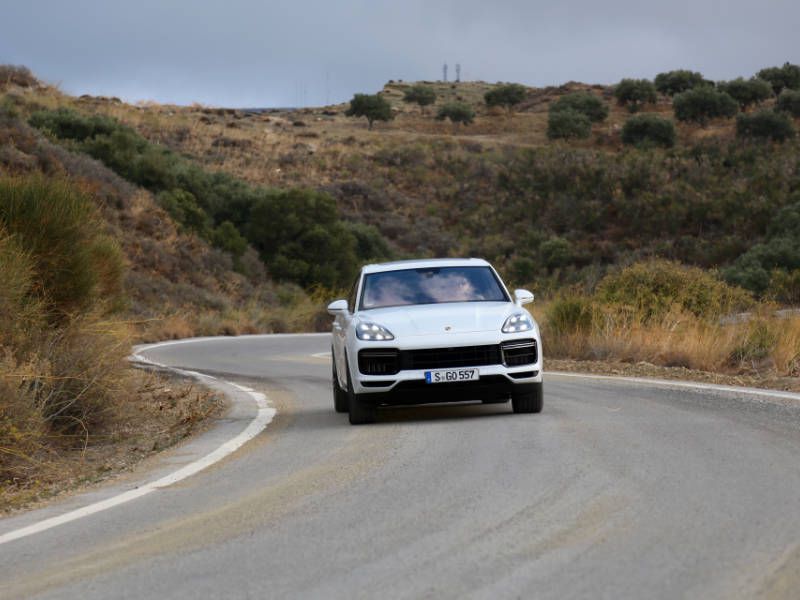
Photo by Miles Branman
Convenience and Safety Features
The 2019 Cayenne takes a huge leap forward in safety and convenience. Drivers now interact with a pair of reconfigurable, 7.0-inch display screens that flank an analog tachometer. Embedded on the wheel are intuitive controls and a new drive mode dial. Dominating the dash is a 12.3-inch touchscreen infotainment display with stunning visuals, an easy-to-use interface and rapid responsiveness to inputs. It took us a moment to learn the center stack’s button layout, but smartphone-style haptic feedback affords confirmation that our commands were received. Standard tech and active safety highlights include four USB ports, an LTE Wi-Fi hotspot, online navigation, low-speed collision warning with braking assist, and front/rear park assist. Optional features include night vision, lane keeping assist, lane change assist, traffic sign recognition, a surround-view camera and adaptive cruise control. Starting in mid-2018, Porsche will offer advanced safety systems that include parking and garage pilot, trailer maneuvering assist and enhanced traffic jam assist.
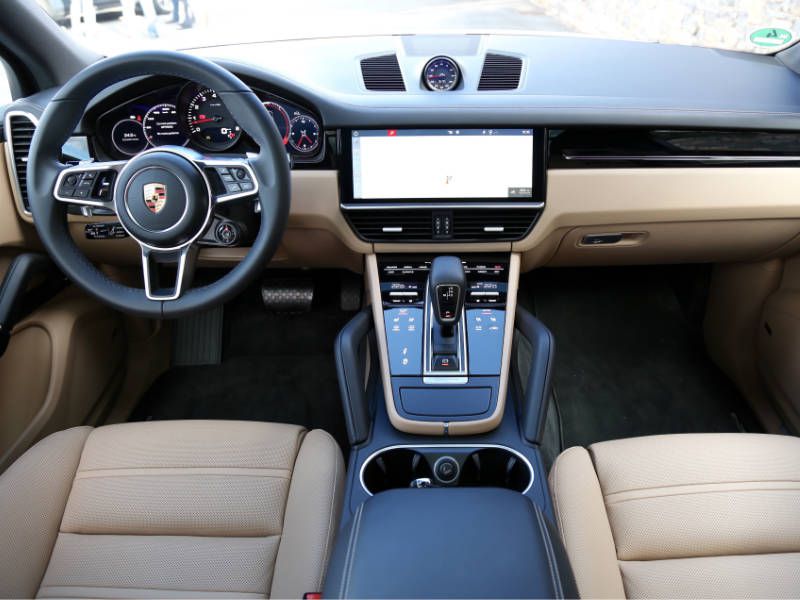
Photo by Miles Branman
Pricing and Packages
The 2019 Porsche Cayenne will arrive at dealerships starting July 2018. Though GTS, e-Hybrid and Turbo S versions are also expected, only Base, S and Turbo models will be available initially. The $66,750 Base model includes 19-inch wheels, all-wheel drive, chassis control, traction management, a touchscreen infotainment system with navigation, Apple CarPlay (but not Android Auto), a 10-speaker sound system, dual digital driver displays, four USB ports, ParkAssist, LED headlights and taillights, dual-zone climate control, eight-way comfort seats, a multi-function steering wheel and a comprehensive airbag system. S models nudge the price point to $83,950, adding 20-inch wheels, PASM, a panoramic roof, automatic tailgate, folding and heated side mirrors, rain-sensing wipers, quad exhaust ports, automatic headlights, keyless ignition and tinted glass. The Turbo tops the range at $125,650, loading on 21-inch wheels, Porsche Surface Coated Brakes, adaptive air suspension with active suspension management, unique quad exhaust ports, adaptive rear spoiler, Bose 14-speaker sound system, LED corner lights, auto dimming mirrors, Alcantara headliner, 18-way adjustable front seats and heated rear seats.
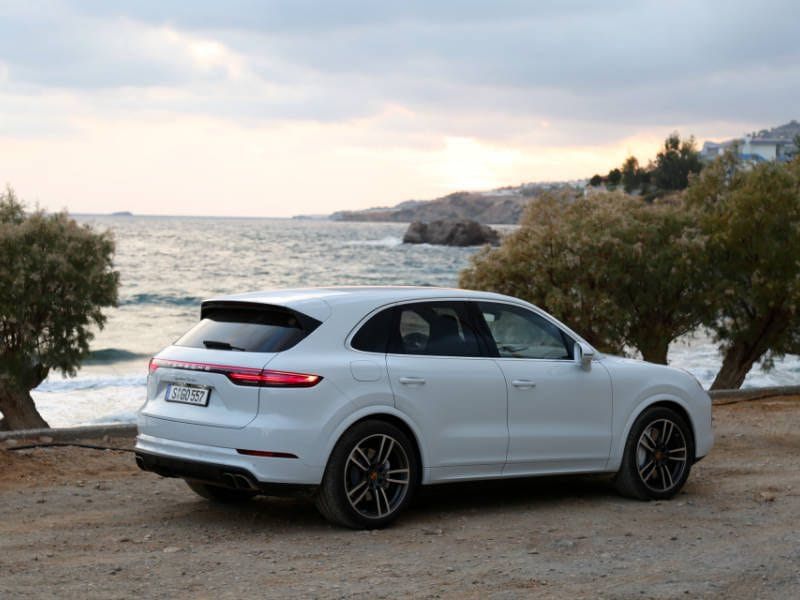
Photo by Miles Branman
Highs and Lows
Highs: - Sleek, cohesive styling - Astounding control and feedback in corners - Smooth, abundant power - Fluid ride over any surface - Advanced yet intuitive convenience features Lows: - Conservative looks may not thrill all shoppers
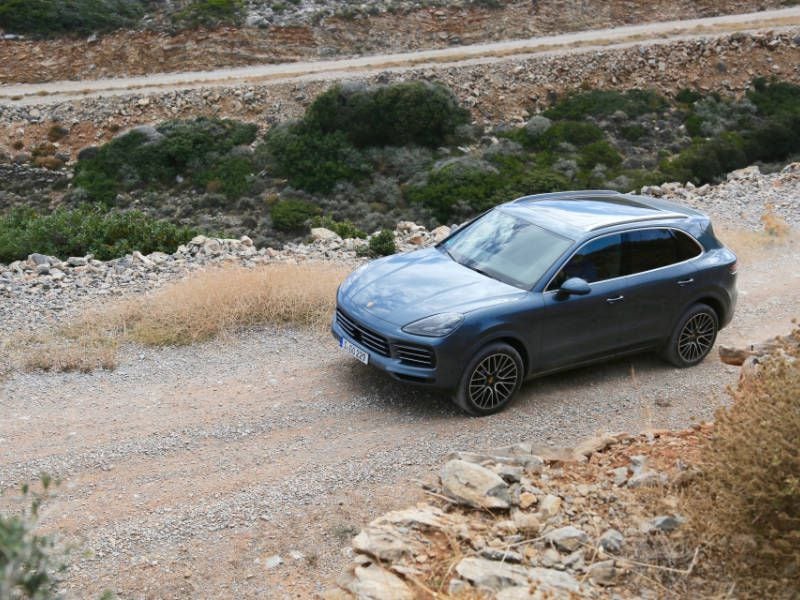
Photo by Miles Branman
Competition
The 2019 Porsche Cayenne competes with the Land Rover Range Rover Sport, BMW X5 and Maserati Levante, among others. In terms of performance, the Levante puts on a good show but simply can’t match the Cayenne’s sure-footedness in corners. Off-road, the Range Rover Sport would prove more capable over diverse terrain, but considering the driving habits of most luxury suv buyers, that counts for little more than bragging rights. Like the Cayenne, BMW’s X5 aims for the cross-section of utility, comfort and agility. In most respects, the X5 is excellent; unfortunately for BMW, the Cayenne is stellar in every category. The Range Rover and BMW do, however, squeeze in small third-row seats; the Porsche maxes out at five passengers.
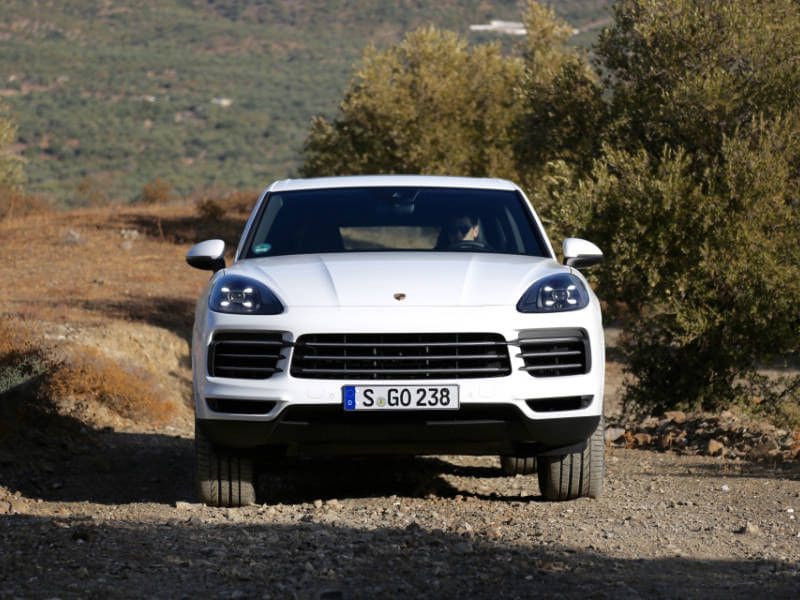
Photo by Miles Branman
Our Take
In 2002, Porsche simultaneously infuriated its fan base and assured its own survival. The Cayenne felt wrong, and indeed it would have been if the automaker had botched it. Rather, Porsche built an SUV with sports car DNA, changing the segment and dooming rivals to play catch-up — an endeavor that continues with this third-generation model. Here’s our take: The definitive performance SUV hasn’t lost its edge, and probably won’t. Porsche keeps finding new ways to sharpen it.
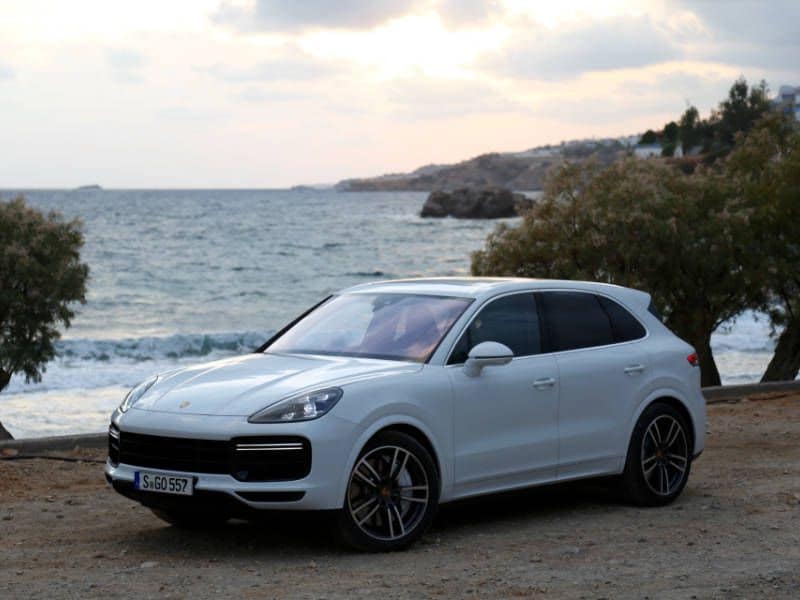
Photo by Miles Branman